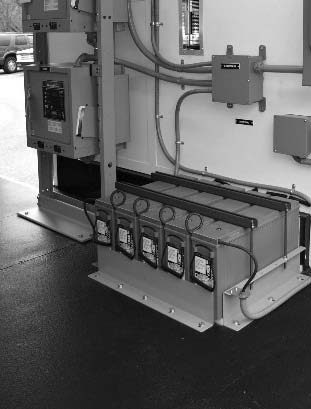Output Voltage Range: The Long & Short of Battery Strings
Part of Chapter Utility Battery Chargers
IN SECTION 1.4.5, How Do I Size a Stationary Battery, the first step is selecting the number of cells you need, based on several factors: the acceptable voltage range for your dc-powered equipment, the float and equalize voltages for the battery type, and the end- of-discharge voltage, which is dependent on the discharge rate.

The number of cells normally falls into a small range. For example, for 125 Vdc buses, using lead-acid batteries, most applications are satisfied with between 58 and 62 cells, with the most common being 60 cells (Figure 2b). For nickel-cadmium, the nominal number is 100 cells, but is usually lower, around 92 cells, because of the high charge voltage requirement of the NiCd cell. Battery chargers are designed with output voltage ranges that accommodate the usual range of cell combinations. For a 125 Vdc bus, for example, a typical equalize voltage range extends to an upper limit of 147 Vdc, adequate for 62 lead-acid cells or 100 NiCd cells. Some NiCd batteries may require higher voltages. Check with the manufacturer. There are similar ranges at the other standard bus voltages to accommodate varying cell combinations.
The NEMA (National Electrical Manufacturers Association) standard PE 5 for stationary chargers specifies the float and equalize voltage ranges for lead-acid and NiCd batteries. Most available chargers meet or exceed the required ranges.
I was just told that we need a new charger for an old, I mean old, emergency lighting system. It runs on 36 Vdc, using 18 old lead-acid cells. You don’t have anything like that in your catalog. Where do I go?
Not to worry. Application engineers at the manufacturer’s factory can whip you up a custom charger in no time at all. All you need to tell them is the number of cells and the maximum equalize voltage. Oh, and of course, the output current.